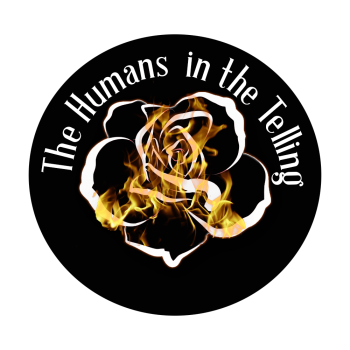As we commemorate the anniversary of the signing of the ECHR, English Cabaret explores the significance of including a portrait of its British midwife in the National Portrait Gallery’s new exhibition in the Duveen Wing and Ondaatje Wing.
In a gallery devoted to Making the Modern World, Harold Knight’s portrait of David Maxwell Fyfe stands out.
On the back wall of Room 28 in the National Portrait Gallery’s new exhibition in the Duveen Wing and Ondaatje Wing, he is hung above philosopher and novelist Iris Murdoch. Two portraits – of actress Jean Simmons and artist Chris Ofili, separate him from a striking portrait of dancer and choreographer Pandit Ram Gopal by Feliks Topolski, who was with him at Nuremberg – as was Laura Knight, distinguished wife of his portrait painter, Harold.
He is in diverse and illustrious company. Nearby are pictures of theoretical physicist and cosmologist Stephen Hawking, poet Philip Larkin, trail blazing business woman and champion of rights for women Caroline Haslett, composer Ralph Vaughan Williams, and comic actor Sid James. He overlooks the head of colourful designer Zandra Rhodes, and is adjacent to the portrait of Diana Princess of Wales. In this popular gallery, eyes are drawn to him beyond bronze busts of the writer and social commentator JB Priestly, and tennis player Virginia Wade.


Many of his companion pieces offer a modern take on portraiture, but Harold Knight’s picture is a rigid evocation of Fyfe as Lord Chancellor sporting full regalia. He looks sternly from the corner of the room next to the exit that leads towards other rooms full of distinguished figures from the more distant past where you might perhaps have expected to find him.
So why is he in amongst those who are not just part of the historical fabric, but have been chosen for what the Gallery itself calls their ‘transformative’ powers in making Britain what it is today?


He is there because of what The Scotsman calls ‘his remarkable legal legacy’, for in many ways we live in the world he created.
As a prosecutor at the Nuremberg War Crimes Trials he contributed to the establishment of international criminal justice – capable of bringing to account those in the world guilty of war crimes and crimes against peace and humanity.
And learning lessons from Nuremberg, working alongside Winston Churchill who also makes an appearance in this gallery in a portrait by Graham Sutherland, he championed and drafted the European Convention on Human Rights.
In his review of Dreams of Peace & Freedom, the song cycle inspired by his journey from Nuremberg to Strasbourg, Thos Ribbits called him
‘a man who can genuinely lay a claim to being one of the architects of freedom and liberty for the post-war world in which we are still living.’
Or as Sadiq Khan, when a labour MP wrote of him,
‘in devising the European Convention on Human Rights, he created something that still has a positive impact on our everyday lives’.
The New Statesman, The Left’s Favourite Tories 6/10/11


The ECHR was a foundation for evolving equality and many of the freedoms that are joyfully expressed in this room, although Maxwell Fyfe himself may have resisted and delayed a number of those changes when returned to power. He described himself as a Victorian – like so many of the eminent faces in neighbouring rooms.
But he understood law to be a ‘living thing’ that properly nurtured would grow and flourish to the benefit of all. And the Convention is one such piece of law.
There are a number of existing artistic representations of David Maxwell Fyfe, including portraits at Gray’s Inn in London, and in the collections of St Anthony and Balliol Colleges, Oxford. His likeness hangs in the House of Lords as Earl Kilmuir of Creich in the County of Sutherland, a title he took in 1954. But nowhere is his relevance to today more striking than in this present position. Works in this gallery will change on a regular basis, but the inclusion of Knight’s portrait here recognises the modern contribution his work at Nuremberg and subsequently in crafting the ECHR has made. Their impact continues to shape the world we live in today.
Discover more about the exhibition – https://www.npg.org.uk/collections/search/location/1051
Read more about the portrait – https://www.npg.org.uk/collections/search/portrait/mw285766/David-Patrick-Maxwell-Fyfe-Earl-of-Kilmuir?locid=1051&rNo=10


